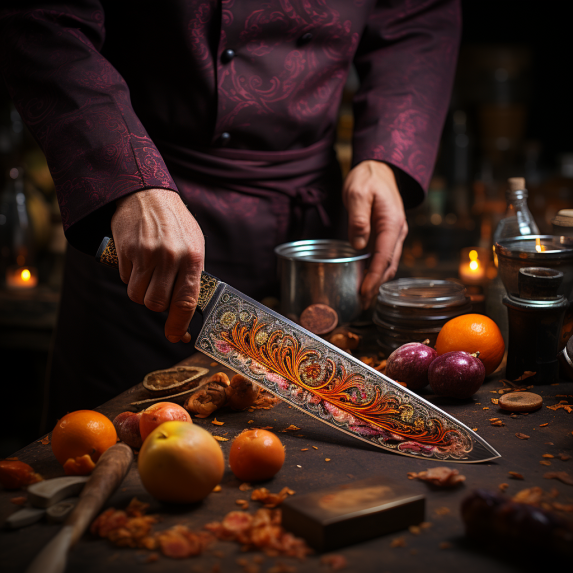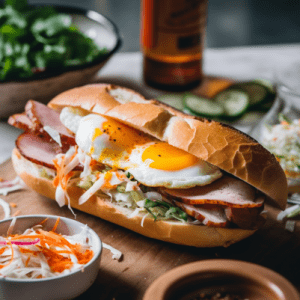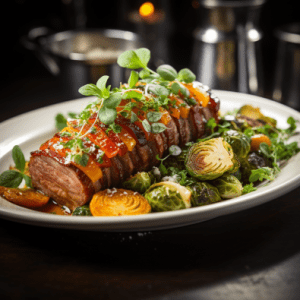Please note that some of the links on this website are affiliate links. I will earn a commission if you decide to make a purchase after clicking through the link. As an Amazon Associate I earn from qualifying purchases.

One essential tool that every home cook should wield with confidence is a sharp knife. Embracing this indispensable companion in the kitchen will not only enhance your safety but also revolutionize the precision of your cuts. Let’s dive into the art of using a sharp knife.
Why a Sharp Knife Matters?
- Safety First: Contrary to popular belief, a sharp knife is actually safer to use than a dull one. With a dull blade, you’re more likely to apply excessive force, causing slips and unexpected accidents. A sharp knife, on the other hand, allows for controlled, effortless slicing, reducing the risk of mishaps in the kitchen.
- Precision Perfected: A sharp knife is a game-changer when it comes to precision cuts. Whether you’re delicately mincing herbs or crafting meticulously thin slices, a sharp blade ensures consistent results, enhancing the visual appeal and texture of your dishes.
- Effortless Efficiency: Working with a sharp knife means less effort and more efficiency. Say goodbye to struggling with tough cuts of meat or squashing delicate ingredients. A sharp blade effortlessly glides through ingredients, saving you time and energy while providing an enjoyable cooking experience.
Tips for Knife Maintenance
Here are some expert knife maintenance tips:
- Honing Ritual: Regularly honing your knife is key to keeping the blade aligned and sharp. Invest in a honing rod and make it a habit to perform quick honing sessions before each use. Simply hold the rod at a slight angle against the blade and swipe it smoothly from the base to the tip, ensuring both sides receive equal attention.
- Sharpening: Honing alone won’t keep your knife razor-sharp forever. Periodically, it’s crucial to sharpen the blade to maintain its precision. Professional sharpening stones or electric sharpeners are excellent tools for this task. Follow the manufacturer’s instructions or seek guidance from professionals to achieve optimal results.
- Storage: Proper knife storage prevents dulling and accidental injuries. Consider investing in a knife block or magnetic strip to keep your blades protected and accessible. Avoid storing knives loosely in drawers, as they can collide and dull the edges. Remember to wash and dry your knives thoroughly before storing them to prevent rusting.
- Cutting Boards: A good cutting board is a knife’s best friend. Opt for boards made of wood or bamboo, as they are gentler on your knife’s edge. Avoid glass or hard plastic cutting boards, as they can quickly wear down the blade. Additionally, regularly sanitize your cutting board to maintain a hygienic cooking environment.
Techniques for Safe and Precise Cuts
Here are some techniques to maximize its potential:
- The Claw Grip: Adopt the “claw grip” technique when holding ingredients. Curl your fingers inward, using your knuckles as a guide for the knife. This grip ensures both safety and precision, minimizing the risk of accidental cuts while allowing for controlled slicing and dicing.
- Rock and Slice: For larger ingredients like onions or herbs, employ the “rock and slice” technique. With the tip of the knife anchored on the cutting board, gently rock the blade back and forth while applying a slight forward motion to achieve consistent, even cuts.
- Slicing with Confidence: When slicing through long, cylindrical ingredients like carrots or cucumbers, create a flat surface by cutting a small portion off the bottom. This technique provides stability, making it easier to control the knife and ensuring uniform slices.
- Let Gravity Assist: For precise cuts on delicate items like tomatoes or bread, allow the weight of the knife to guide your slicing motion. Apply gentle pressure and let gravity do the work as you smoothly glide through the ingredient.
Conclusion
In the realm of culinary arts, a sharp knife is the gateway to unlocking your true potential as a home cook. Remember, honing and sharpening are not just chores; they are rituals that connect you to the centuries-old craft of knife mastery. As Anthony Bourdain once said, “Good food is very often, even most often, simple food.” With a sharp knife in your hands and a touch of precision, you’re well on your way to creating simple yet extraordinary culinary masterpieces. So, begin to wield your knife with confidence, and let your inner chef shine through!












